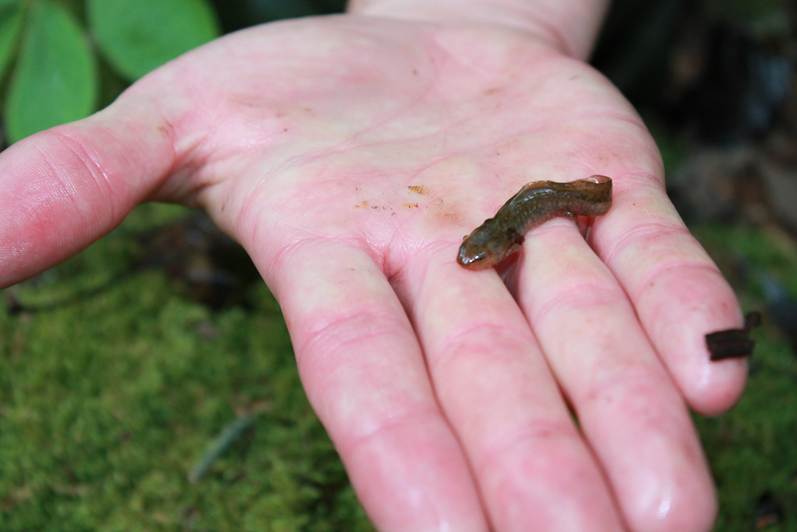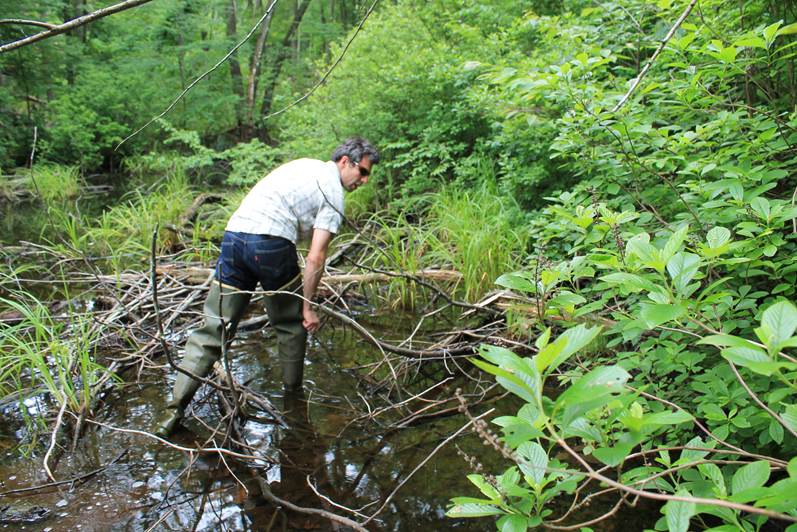Not long ago, evolutionary biologists were fairly sure that evolution was such a slow process that they couldn’t witness it in their own lifetime. Ecologists who studied the changes in ecosystems didn’t worry about tracking the evolution of the species they observed. But it’s now becoming clear, thanks to studies like Brady’s, that evolution happens fast—and that we humans are among the best engines of evolution on the planet.
The first evidence of evolution in our own time came from exotic places, like the Galapagos Islands, lying hundreds of miles off the coast of Ecuador in the Pacific Ocean. Biologists working on the islands documented changes to the beaks of Darwin’s Finches. When droughts hit the islands, many populations of birds could only survive on hard seeds. The birds with the strong, thick beaks were more likely to escape starvation and reproduce. The birds of the next generation had thicker beaks on average than their parents.
Scientists have found evolution at work in many other species since then. And in a growing number of cases, humans are the force driving their evolution. Humans have become the ultimate top predator, for example, catching over 140 million tons of fish each year. Many fisheries require that small fish get thrown back. As a result, many species of fish have evolved so that they are smaller when they reach adulthood.
More recently, scientists have documented other examples of natural selection not on remote islands or in the deep oceans. Even in a heavily settled place like Connecticut, evolution is at work.
A century ago, much of Connecticut was cleared for farming. Since then, maples and other trees have spread across a great deal of the land. Some ponds that once basked in open sunlight are now cloaked in shade. A decade ago, Yale ecologist David Skelly wondered if the wood frogs living the ponds were adapting to the changing levels of sunlight.
Skelly found ponds in Yale Myers Forest that were cast in dark shade, bathed in bright light, or fell somewhere in between. He studied the frogs in each pond and discovered that the tadpoles in the shaded ponds took up to twice as long to develop as the well-lit ones. He brought eggs from the ponds to his lab at Yale, where he raised them in identical conditions. The eggs from shaded ponds still took longer. Skelly knew that the environment can cause genetically identical organisms to grow differently. A plant that grows in the shade, for example, will grow broad leaves and shallow roots; the same plant put in the sun may grow smaller leaves and deep roots. To test this possibility, Skelly brought frog eggs from shaded ponds and sunny ones to his lab and raised them under identical conditions. The eggs from shaded ponds still took longer to develop. That result told Skelly that the difference between the frog populations was genetically encoded.
The growth rate is not the only thing about the frogs that’s evolving. Skelly also found that frogs in shaded ponds prefer warmer water than frogs in open ponds, for example. What makes Skelly’s findings all the more striking is just how little distance he had to go to find big differences in the frogs. A shaded pond and a well-lit one might be separated by just a couple hundred meters and contained differently adapted frogs.
When Brady came to Skelly’s lab in 2008, he wanted to look for other kinds of human activity that might be driving evolution. He soon realized that roads were a good place to look.
Over the past century, the United States has become crisscrossed by a growing web of roads. All told, their blacktop covers an area greater than the entire state of Indiana. Eighty percent of the United States is within a kilometer of a road. And on those roads, traffic has exploded, quadrupling between 1960 and 2000.
The ecological effects of this growing road network are vast. A million vertebrate animals get killed by vehicles in the United States every day. Roads can cut off the migration routes of animals, and they can also slice habitats into smaller fragments.
Roads are also rivers of pollution. In winter, road crews dump tons of salt to melt ice, and much of the salt ends up in the ground alongside the roads, where it can spread for hundreds of meters. “You can taste the salt in these ponds,” says Brady. Along with the salt come heavy metals scraped from brake pads and catalytic converters, organic compounds from gasoline and diesel and a catalog of other pollutants. “There’s a slew of stuff that comes off of roads,” says Brady.
Brady wondered if the pollution coming into the ponds could drive the evolution of their inhabitants. Hiking through the Yale Myers Forest, he selected five ponds near roads to study, along with five others deep inside the woods. He gathered balls of spotted salamander eggs attached to submerged logs. Brady then built cages out of Rubbermaid containers, which he filled with a mix of salamander eggs from the two different kinds of ponds. He submerged the containers into the ponds—some by roads. Then he waited to see how many of the salamanders managed to hatch and reach adulthood.


